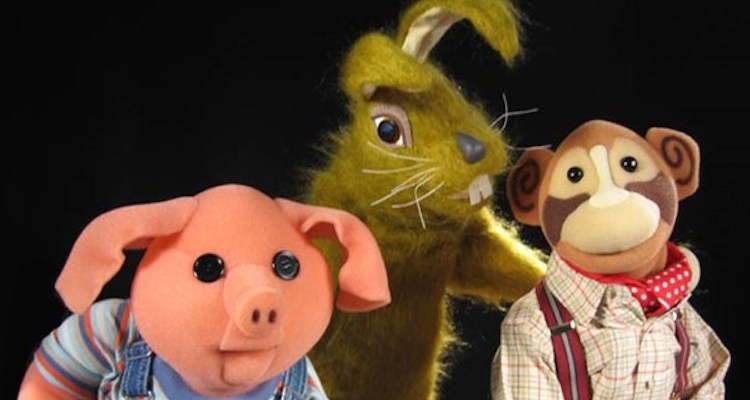Pipkins, 1973
Do you remember those old lunchtime kids TV shows, everybody remembers Rainbow, after all there are plenty of comics who’ve had good mileage out of it. We’ve dug out a little gem from the 1970’s
It’s 1972 and the ITV network are expanding their daytime broadcasting hours. The Independent Broadcasting Authority commissions the four of the main ITV companies to each provide a series aimed at pre-schoolers, at the time the only such series was the successful US import Sesame Street. ITV duly obliged: Thames gave us Rainbow (how many comics would get material from that over the years !), Yorkshire gave us Mr Trimble, Granada, Hickory House, whilst ATV’s contribution was Inigo Pipkin.
The series made it’s debut in January 1973, it was broadcast in the lunchtime slot i.e. 12.00, with it’s main character an elderly puppet maker called Inigo Pipkin (hence the original title). The puppets were his creations, and over the course of the first series, viewers saw Inigo bring to life Hartley Hare and the Tortoise and Topov the monkey, Pig and Octavia the ostrich. The series was a success and a second was commissioned.
Whilst filming series two in March 1973, George Woodbridge who played Inigo Pipkin, died suddenly after a heart attack. The show was not recorded in order of transmission, leaving the later part of the series complete and earlier episodes yet to record. The scripts were hastily re-written to cover Inigo Pipkin’s absence.
A year after it’s first series, 1974, in a first for children’s television the death of Inigo Pipkin was worked into the story lines. Mr Pipkin’s assistant Johnny, took over and the name changed to Pipkins. Johnny left in 1978 and was replaced by Tom, who himself moved on in 1980 (it’s like snakes and ladders!). Peter Potter took the reins for the remaining series. In these later shows there were regular appearances from the Pipkins’ neighbour, Mrs. Muddle.
Other changes had been made in 1979, when in the episode ‘Moving Out” the familiar puppet workshop set was replaced with new interiors based around a kitchen and backyard. The new set was built up from ground level to enable puppeteers to work standing up and to move around more freely, modelled on the methods used by The Muppet Show which was also filmed at ATV’s Elstree Studios.
In 1981, after 333 episodes and 10 series Pipkins came to an end after being cancelled.
The cancellation came about after ATV who made the show lost it’s franchise for the Midlands ITV region.
Summary
Early episodes revolved around puppet maker Inigo Pipkin and his puppet workshop. However following the death of the actor who played Pipkin, the show took on a new direction with the characters becoming the “Help People” helping anyone in need of a hand.
As the latter part of series two had been recorded, prior to Pipkin’s death his absence from the early part of series two is explained as Mr Pipkin being away on a fishing holiday.
Clips
[AdSense-A]
[AdSense-A]
[AdSense-A]
Main Cast
Inigo Pipkin – George Woodbridge
Johnny – Wayne Laryea
Tom – Jonathan Kydd
Puppets over the years were voiced by many including: Nigel Plaskitt , Heather Tobias
Puppets
Hartley Hare
Topov Monkey
Pig
Tortoise
Mooney Badger
Octavia Ostrich
Details
Channel: ITV
Created By: Michael Jeans & Susan Pleat
Produced By: ATV for ITV
Original Transmission Dates: 1st January 1973 – 29th December 1981
Did You Know ?
Pipkins was one of the first children’s programmes on British TV where the characters had regional accents (Pig had a Black Country accent while Topov the monkey was a Cockney and Octavia the ostrich had a French accent).
Archive Status
The now familiar story of wiped episodes means out of a total of 333 episodes, only 135 have survived. 198 episodes no longer exist in any format whatsoever, while two others exist on 625 line PAL Colour Videotape only as incomplete copies (possibly due to videotape damage caused by poor storage). Fortunately, Nigel Plaskitt — who provided the show’s narration, as well as voicing and operating Hartley and Tortoise — made off-air domestic videocassette recordings of around 56 episodes (now the only format in which these are known to exist), and some have been used for the DVD release in the UK

